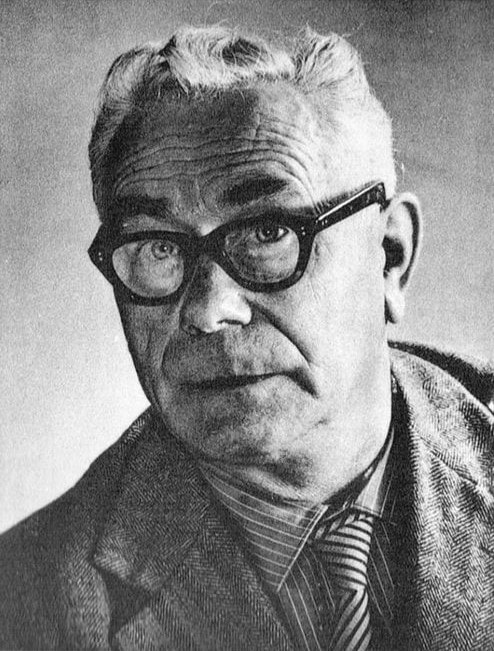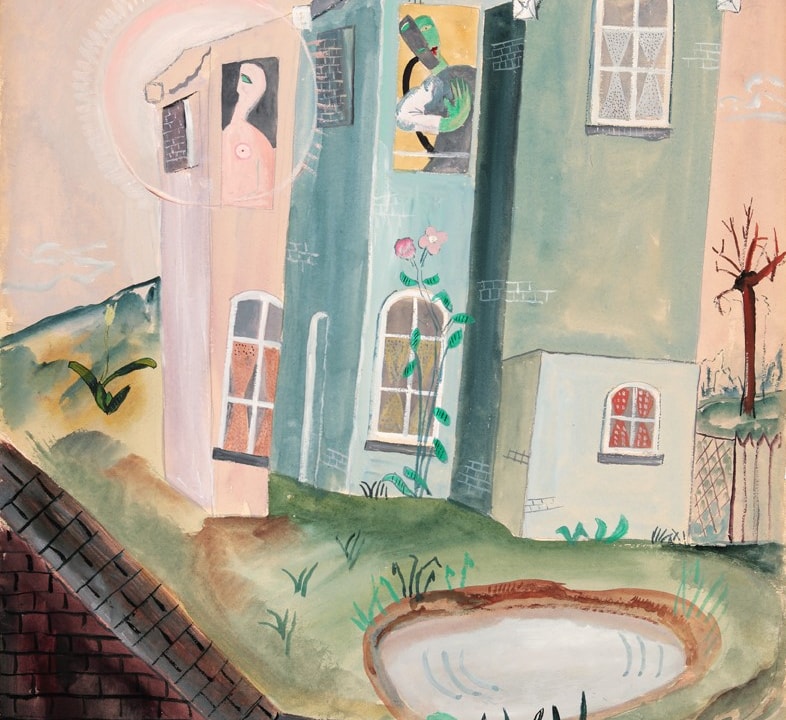Jules De Sutter
(1895 - 1970)

Jules De Sutter
(1895 - 1970)
Contrairement à bon nombre des compagnons de Laethem, De Sutter n’est pas d’origine bourgeoise. Il a été élevé dans une pauvre famille ouvrière qui déménage en 1902 à Lochristi. C’est là que grandit le jeune garçon, en pleine vie campagnarde. Apprenti du photographe gantois Isidoor Mast, il découvre très jeune Laethem-Saint-Martin où ce photographe a une résidence secondaire. Grâce à Mast, il peut suivre des cours du soir à l’Académie des Beaux-Arts de Gand. Les années de guerre ne troublent que très peu ce bonheur naissant. Et en 1918 déjà, il loue un atelier au Patershol.
Dans la deuxième moitié des années 1920, De Sutter monte au firmament des artistes. Après 1925, son travail est régulièrement affiché dans le magazine moderniste Sélection. Finalement, De Sutter entre sous contrat à la galerie bruxelloise Le Centaure. Jusqu’aux années de crise, il se voit de la sorte quelque peu soutenu financièrement. Il ne peut cependant égaler le succès financier de son ami Gustave De Smet. Contrairement à son ami, De Sutter ne domine pas la vie artistique de la capitale. Il est néanmoins, en compagnie de Hubert Malfait, l’hôte en 1928 de la galerie Le Centaure. Et la Galerie Georges Giroux l’invite également à maintes reprises. Mais c’est surtout sur le plan local, à Gand, qu’il connaît le succès.
Jusqu’en 1929, De Sutter demeure à Waregem, à la Rozenhuis de la famille De Sutter où avaient déjà séjourné auparavant Modest Huys et Gustave Van de Woestyne. En 1929, il atterrit à Astene.
Comme son ami Gustave De Smet, De Sutter est lui aussi dans ses petits souliers pendant les années de la crise économique. Sa galerie, Le Centaure, fait faillite et sa sécurité financière fond comme neige au soleil. Il faut dire que la presse conservatrice s’empare de la crise économique et de la faillite des galeries modernistes pour annoncer également la fin de l’expressionnisme, le courant dominant dans les années 1920. Soudain, De Sutter se retrouve dans le camp ennemi. Comme ses collègues artistes Hubert M alfait et Frits Van den Berghe, Jules De Sutter se remet difficilement de cette gifle.
À partir de 1933, De Sutter est concerné de près par la création et le fonctionnement de la salle d’arts gantoise Ars. La galerie est garante de bonnes ventes et attire sur lui l’attention des collectionneurs. En 1937 et 1938, il y est invité. Nonobstant son soutien à la galerie catholique Ars, il est en même temps membre du Cercle d’Études Socialiste de la ville. Ce cercle organise une exposition individuelle de son travail dans la salle des fêtes du quotidien Vooruit.
C’est seulement en 1939 qu’il revient à Laethem-Saint-Martin. Il demeure dans le village jusqu’à sa mort et forme avec Hubert Malfait et Albert Saverys le groupe post-expressionniste. La reconnaissance officielle n’arrive qu’en 1944, lorsqu’il est nommé professeur à l’académie gantoise. Par ailleurs, l’occupant allemand interdit son exposition individuelle à la Salle Ars.
Après la guerre, De Sutter connaît de remarquables expositions. La 26e biennale de Venise en 1952 le porte même au pavois. Et une grande exposition est organisée en février 1963 à la Galerie Nova à Malines, où le pape des arts de l’époque, Karel Geirlandt en personne, prend même la parole lors du vernissage.
Dans la deuxième moitié des années 1920, De Sutter monte au firmament des artistes. Après 1925, son travail est régulièrement affiché dans le magazine moderniste Sélection. Finalement, De Sutter entre sous contrat à la galerie bruxelloise Le Centaure. Jusqu’aux années de crise, il se voit de la sorte quelque peu soutenu financièrement. Il ne peut cependant égaler le succès financier de son ami Gustave De Smet. Contrairement à son ami, De Sutter ne domine pas la vie artistique de la capitale. Il est néanmoins, en compagnie de Hubert Malfait, l’hôte en 1928 de la galerie Le Centaure. Et la Galerie Georges Giroux l’invite également à maintes reprises. Mais c’est surtout sur le plan local, à Gand, qu’il connaît le succès.
Jusqu’en 1929, De Sutter demeure à Waregem, à la Rozenhuis de la famille De Sutter où avaient déjà séjourné auparavant Modest Huys et Gustave Van de Woestyne. En 1929, il atterrit à Astene.
Comme son ami Gustave De Smet, De Sutter est lui aussi dans ses petits souliers pendant les années de la crise économique. Sa galerie, Le Centaure, fait faillite et sa sécurité financière fond comme neige au soleil. Il faut dire que la presse conservatrice s’empare de la crise économique et de la faillite des galeries modernistes pour annoncer également la fin de l’expressionnisme, le courant dominant dans les années 1920. Soudain, De Sutter se retrouve dans le camp ennemi. Comme ses collègues artistes Hubert M alfait et Frits Van den Berghe, Jules De Sutter se remet difficilement de cette gifle.
À partir de 1933, De Sutter est concerné de près par la création et le fonctionnement de la salle d’arts gantoise Ars. La galerie est garante de bonnes ventes et attire sur lui l’attention des collectionneurs. En 1937 et 1938, il y est invité. Nonobstant son soutien à la galerie catholique Ars, il est en même temps membre du Cercle d’Études Socialiste de la ville. Ce cercle organise une exposition individuelle de son travail dans la salle des fêtes du quotidien Vooruit.
C’est seulement en 1939 qu’il revient à Laethem-Saint-Martin. Il demeure dans le village jusqu’à sa mort et forme avec Hubert Malfait et Albert Saverys le groupe post-expressionniste. La reconnaissance officielle n’arrive qu’en 1944, lorsqu’il est nommé professeur à l’académie gantoise. Par ailleurs, l’occupant allemand interdit son exposition individuelle à la Salle Ars.
Après la guerre, De Sutter connaît de remarquables expositions. La 26e biennale de Venise en 1952 le porte même au pavois. Et une grande exposition est organisée en février 1963 à la Galerie Nova à Malines, où le pape des arts de l’époque, Karel Geirlandt en personne, prend même la parole lors du vernissage.


